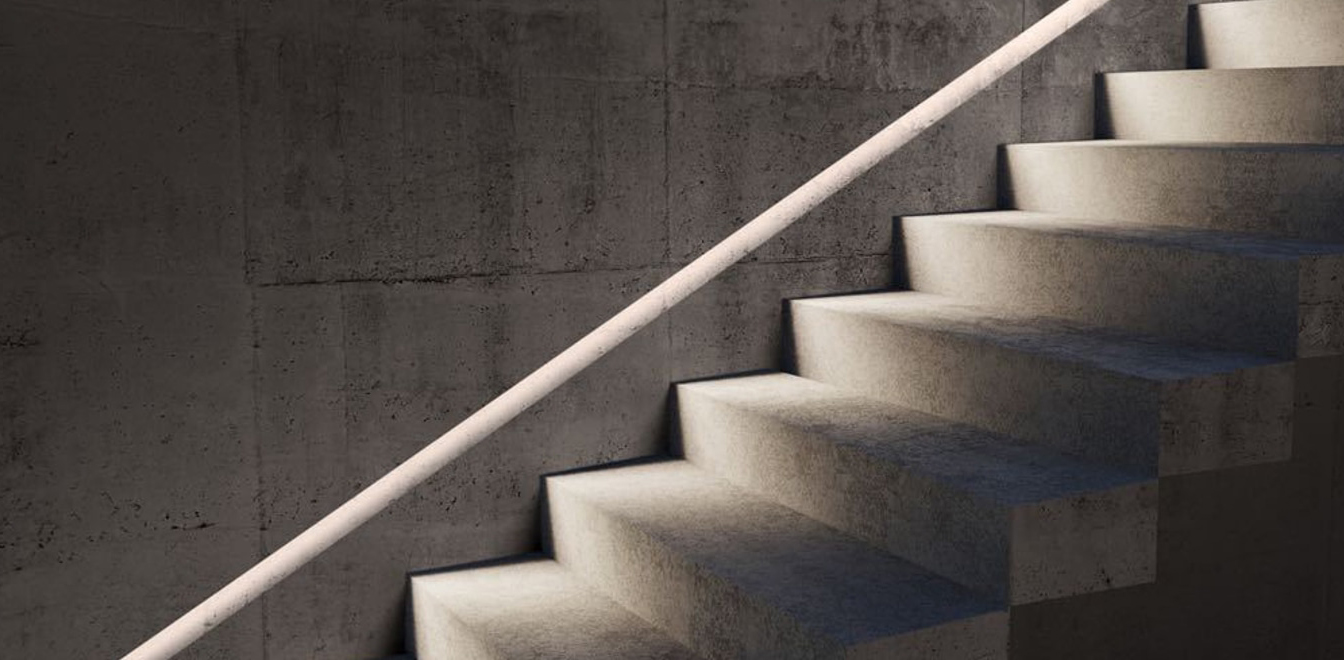The Main Entry Deadline for Architizer's 2025 A+Product Awards is Friday, December 6. Get your brand in front of the AEC industry’s most renowned designers by submitting today.
Ceramic tile lives in that coveted family of architectural materials that is versatile, high-performing and extremely beautiful all at once. It’s no wonder that ceramic tiles have been a staple and eye-catching building material since the beginning of time, and today, more than 2.75 billion square feet of ceramic is used in construction in the US each year.
This week we spoke with Sergio Diaz of the Roca Tile USA, who expertly guided us through the specification choices that architects can make to fully harness ceramic tile flooring in their upcoming designs.
Search for Ceramic Tile Manufacturers
Ceramic Tile Materials
There are several different types of ceramic, each with their own aesthetic and performance characteristics and finishing possibilities. However, the main difference that needs to be drawn and understood is the difference between porcelain and non-porcelain ceramic tiles.
Porcelain Tiles: Porcelain is just one of the many varieties of ceramic tile. While the primary ingredient in porcelain is finely ground sand, porcelain tiles are composed of quartz, clay and feldspar. These ingredients are processed using very high pressure and are fired at a temperature ranging from 1200-1400-degrees Celsius. Due to its density and composition, unglazed porcelain tiles have many of the same excellent durability qualities as glazed ceramic tiles.
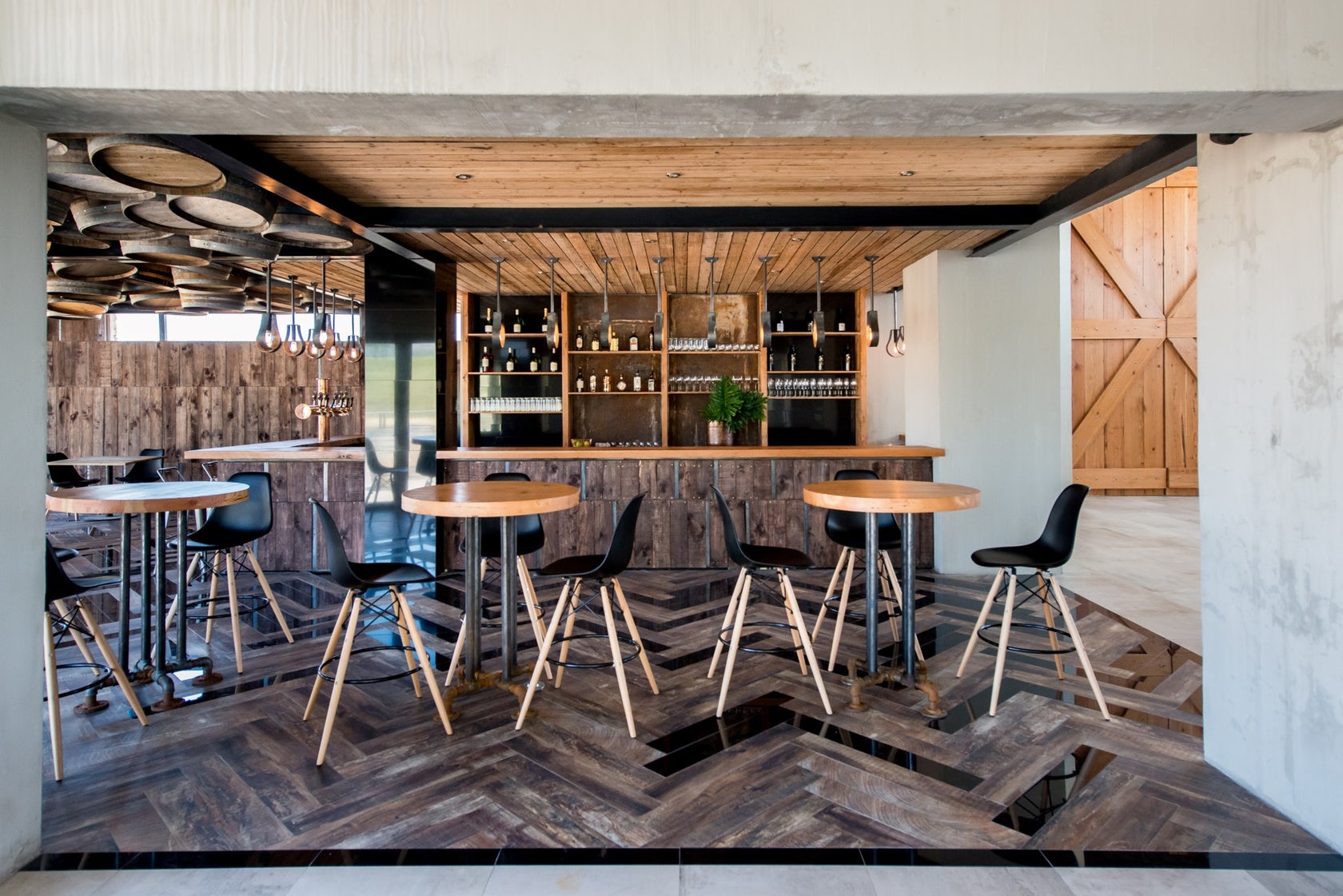
Anura Vineyards’ Event Venue and Bar by Inhouse features black high-gloss porcelain tiles by Not Just Tiles that are laid alongside wood flooring in a herringbone pattern.
In general, porcelain has fewer impurities than ceramic. The main difference lies in the fact that porcelain is much more impervious to water filtration than ceramic. Specifically, the American Society for Testing Materials (ASTM) defines porcelain tile as having a water absorption rate of less than 0.5%. As a result, porcelain clay is denser and considered much more durable than ceramic tiles; this means that they are suitable in both light and heavy traffic areas as well as interior and exterior applications. “We do airports, malls, hotels and any other kind of high-traffic area with porcelain,” said Diaz. “It’s really the perfect material for that.”
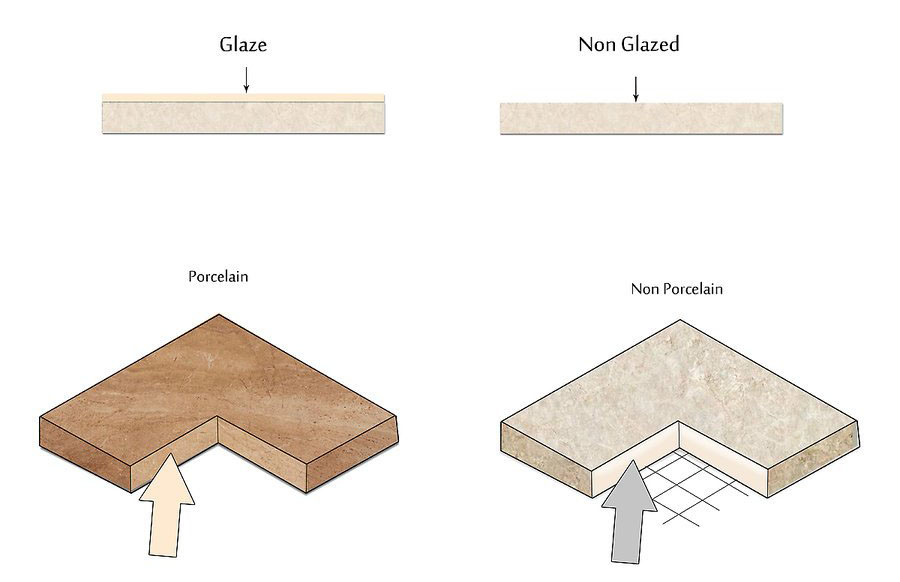
Diagram illustrating the difference between through-body porcelain and non-porcelain tiles; image via WikiHow
In addition, the through-body composition of porcelain means that the clay used to create the entire body of the tile has pigments very similar to what it looks like on the surface. Therefore, if you chip a porcelain tile the color keeps going, which makes any imperfections nearly invisible. In contrast, if you were to chip a ceramic tile, you would find a different color underneath the top glaze.
One of the challenges associated with porcelain tile is that because of its density, it can be difficult to cut. It is simultaneously much more brittle than ceramic, which means it should always be cut by an experienced practitioner.
Non-Porcelain Ceramic Tiles: With a significantly higher water absorption rate of around 4%, non-porcelain ceramic tiles are much more prone to wear and chipping than porcelain tiles. Because of this porosity, the top surface of a ceramic tile is typically sealed with a glaze that also determines the tile’s finished color, design and texture.
Ceramic tiles are only suitable for light traffic areas as they are much less resilient than porcelain tiles. In addition, ceramic is only suitable for interior applications since it absorbs too much water to be durable in exterior applications. This is especially important in areas where the temperature drops below freezing, as the tile will not be able to withstand such extreme fluctuations. Ceramic tiles can be sold individually or mounted onto mesh sheets.
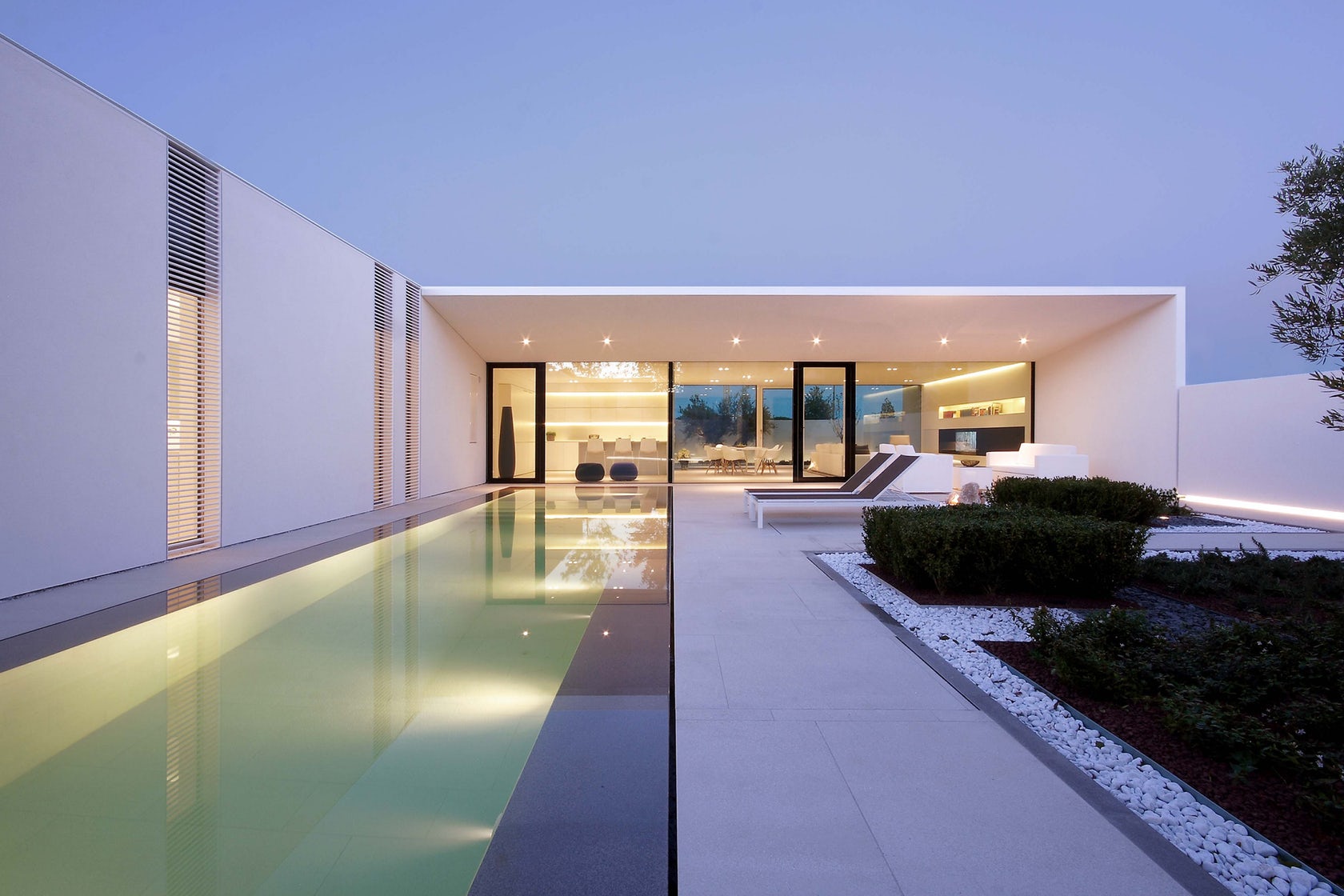
Jesolo Lido Pool Vila by JM Architecture features Mosa‘s ceramic tile Quartz collection.
Aesthetics
In this section, we explore some of the exciting aesthetic possibilities of ceramic tile. For further inspiration, make sure to check out Architizer Journal’s article, 17 Stunning Ceramic Tile Products Every Architect Should Know.
Glazing: There is no difference in the manufacturing process between glazed and unglazed ceramic and porcelain tile. However, glazed tiles go through an additional phase in the firing process. Glazed tiles allow for a wide range of colors and styles, and also tend to be more resistant to staining than unglazed tiles, since they are usually imparted with a non-porous layer of liquid glass.
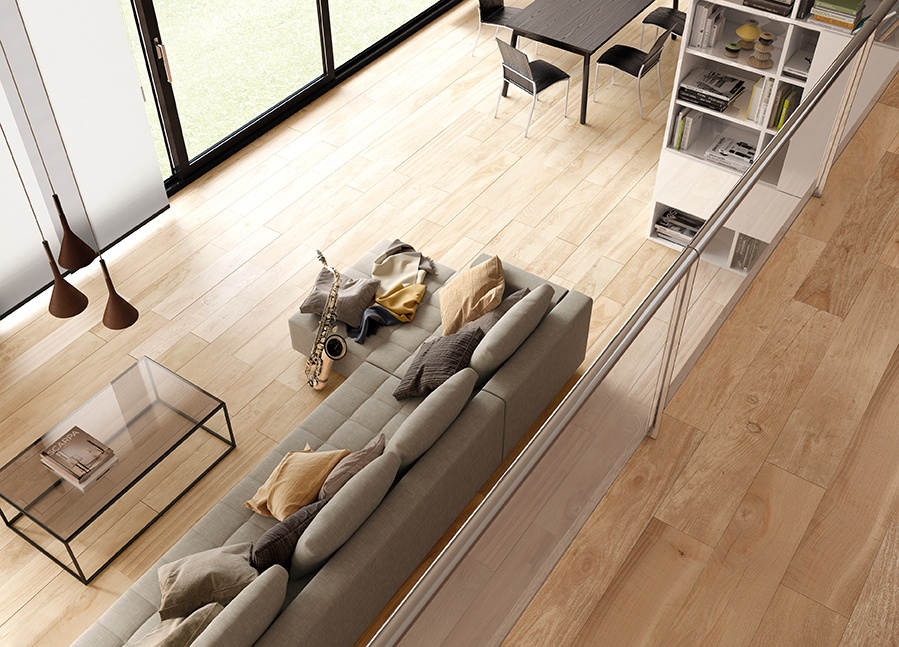
Roca‘s Borneo colored body porcelain tile is characterized by subtle printed designs that reproduce the look of natural wood; image via Roca
Digital Printing: Through printing on top of tile, it is possible to harness ceramic tiles that achieve the look of various natural stones, with both subtle and rustic feels. “Often people think that printing onto tile means low quality,” said Diaz. “However, with the high quality inkjets that we have in our factories here at Roca, we are able to create extremely high definition designs. With our Carrara print, for example, you really can’t tell the difference unless you use a magnifying glass.
“I hope that more and more architects start to use printed tile in the future,” said Diaz. “Since we are just printing on top of the tile, these types of tiles are still referred to as glazed tiles.”
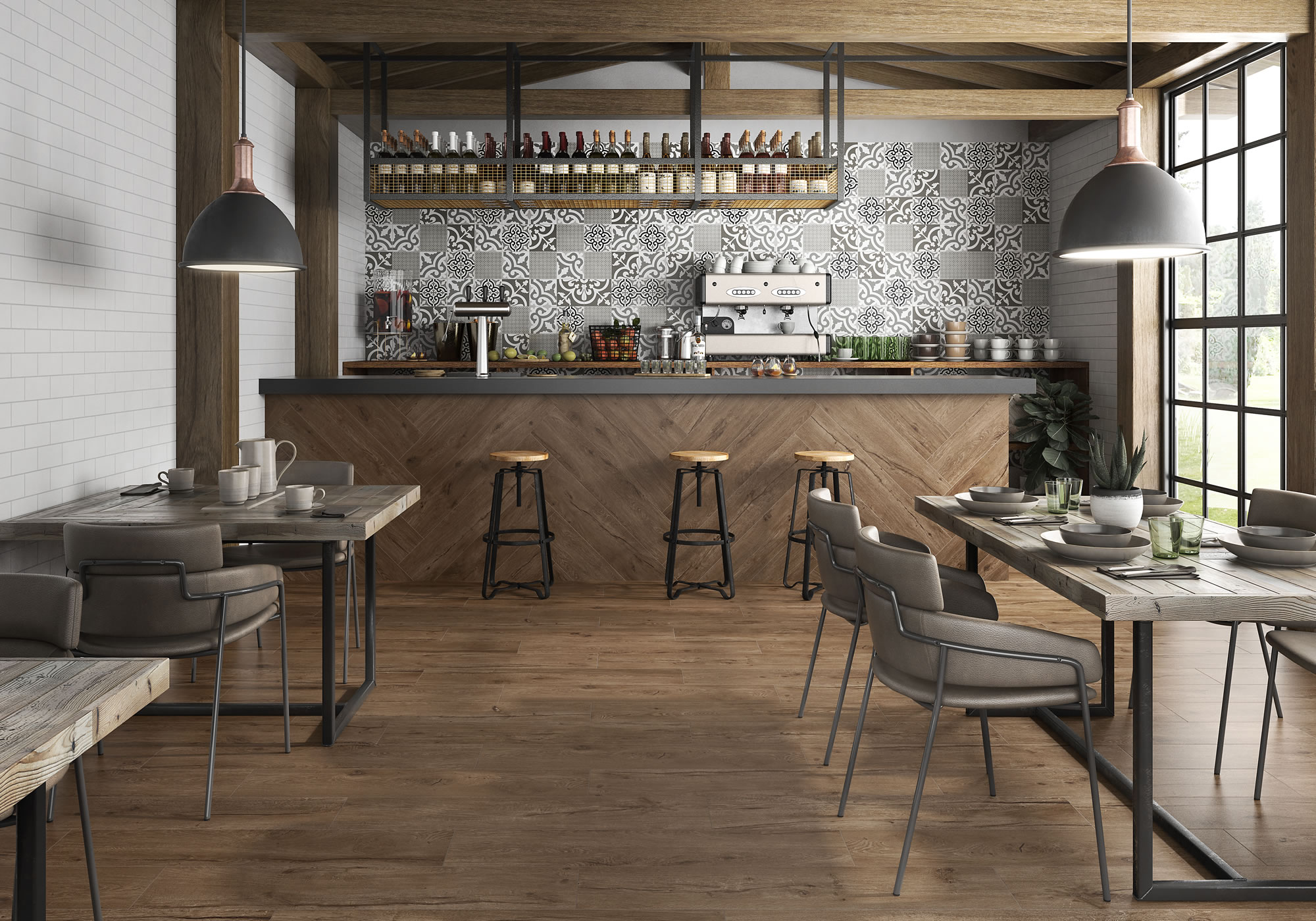
Basel Color Body Porcelain tiles; image via Roca
Size: “In New York, the most popular size of ceramic floor tiles is 12×24; some projects will also use 24×24. However, rectangular formats are the standard for the industry,” said Diaz. “In an area like Florida, even larger formats like 24×48 are much more common. This is because in New York, spaces are generally much smaller and the majority of residential spaces are still dominated by wood flooring; it’s also a temperature and climate thing, since you’re less likely to feel the cold on a wood floor. Although, this is starting to change. We have a project going up in New York right now that does not even have one small piece of wood flooring.”
Patterns: Both simple and complex tile patterns can be harnessed to create increased visual interest within a space. Some of the most common patterns to know are stack bond, diagonal, herringbone, basket weave, windmill and cobblestone. However, these represent just a small fraction of the patterns that are possible. Arizona Tile provides line drawings for various patterns that are possible using ceramic floor tiles.
Performance
Color Permanence: One of the greatest qualities of ceramic tiles is their color permanence; this is because color is either fired directly into the clay body or into the glazed surface. Even tiles that are constantly exposed to sunlight will not lose their color or begin to fade, thus maintaining a pristine condition throughout their lifetime.
Flame Resistance: Since all ceramic tiles are fired at very high temperatures, they will not burn or melt. The superior fire resistance of ceramic materials has made it a staple of building materials since early civilization.
Maintenance: “In terms of maintenance, ceramic tiles are the best material. You can accomplish an amazing look with such low maintenance,” said Diaz. Since dirt, stains and liquids simply rest on the surface for the most part, they are very easy to wipe away.
Smooth and glazed surfaces are typically easier to clean than rough and unglazed ones. If your application requires frequent cleaning or maintenance, it may be best to speak to your manufacturer about special glazes that will make cleaning processes easier to carry out.
Sustainability: “Roca has certain collections with up to 80% recycled content,” said Diaz. “It’s so important for our factories to be able to recycle their waste, so this is something we are extremely conscious about. Pretty much all of our products are at least 30-40% recycled content.”
Substrate: The substrate, or the floor that your tile will be installed onto, is one of the most important elements of preparing for your tile flooring. It is important to ensure that it is flat, smooth and free of any defects. If your substrate is concrete, make sure that you wait at least a month before applying the ceramic tile, in order to allow it to dry completely.
Case Studies
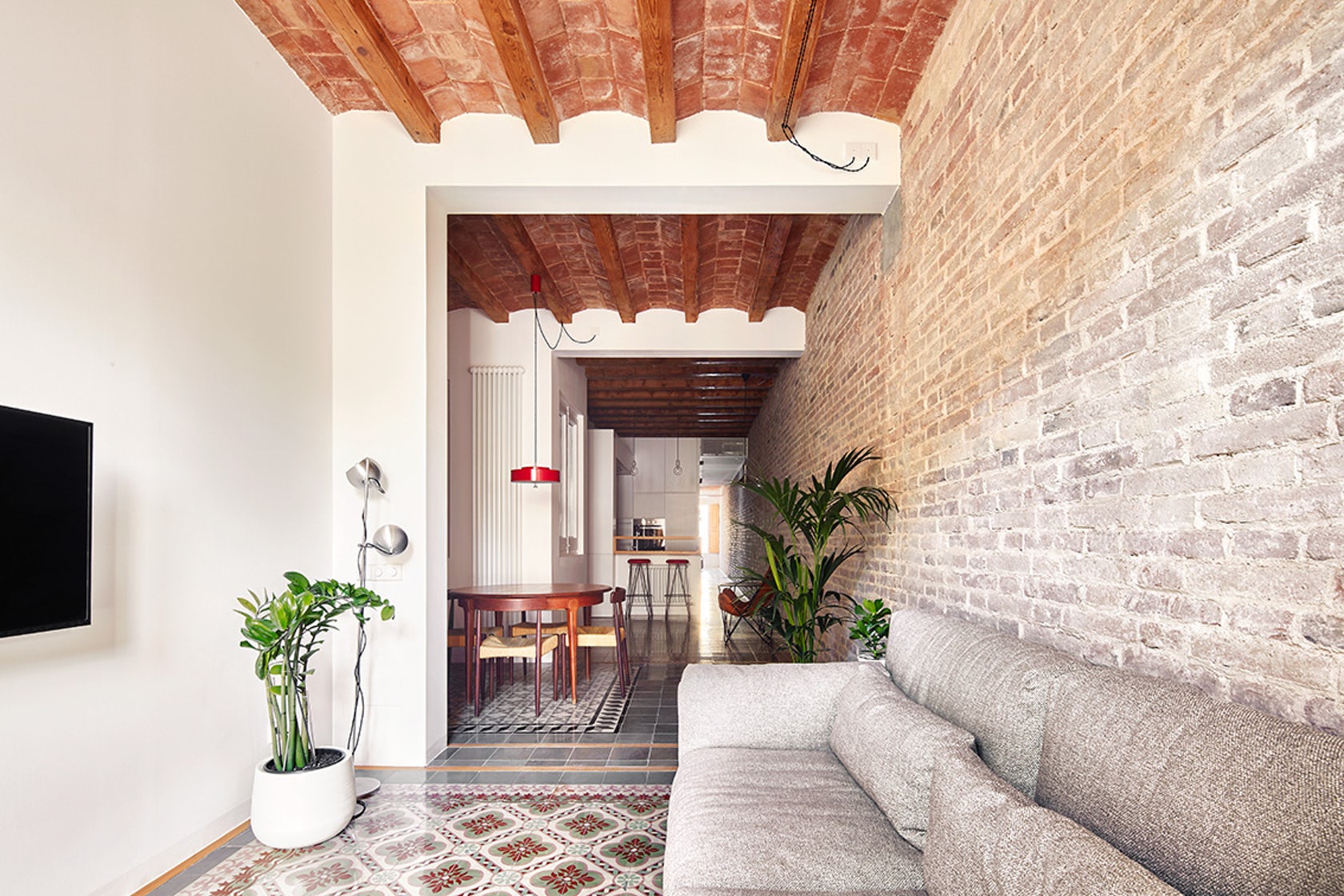
Flat Renovation in the Eixample District of Barcelona by M2Arquitectura: Meritxell Lázaro and Mischa Essletzbichler
13 Barcelona Apartment Floors Recalling Art Nouveau
If you’re an architect looking for inspiration when selecting ceramic tile flooring for your next project, look no further than Catalonia. This collection showcases 13 breathtaking apartments that emphasize the passing of time and celebrate forgotten elements of Barcelona’s early 20th-century apartments. Each intervention redraws historic flooring that in many cases had been veiled or lost over the course of the past century. The recalled tile flooring — including mosaic, terra cotta and other geometric tiling — remains one of the most characteristic elements of Barcelona’s beloved art nouveau apartments.
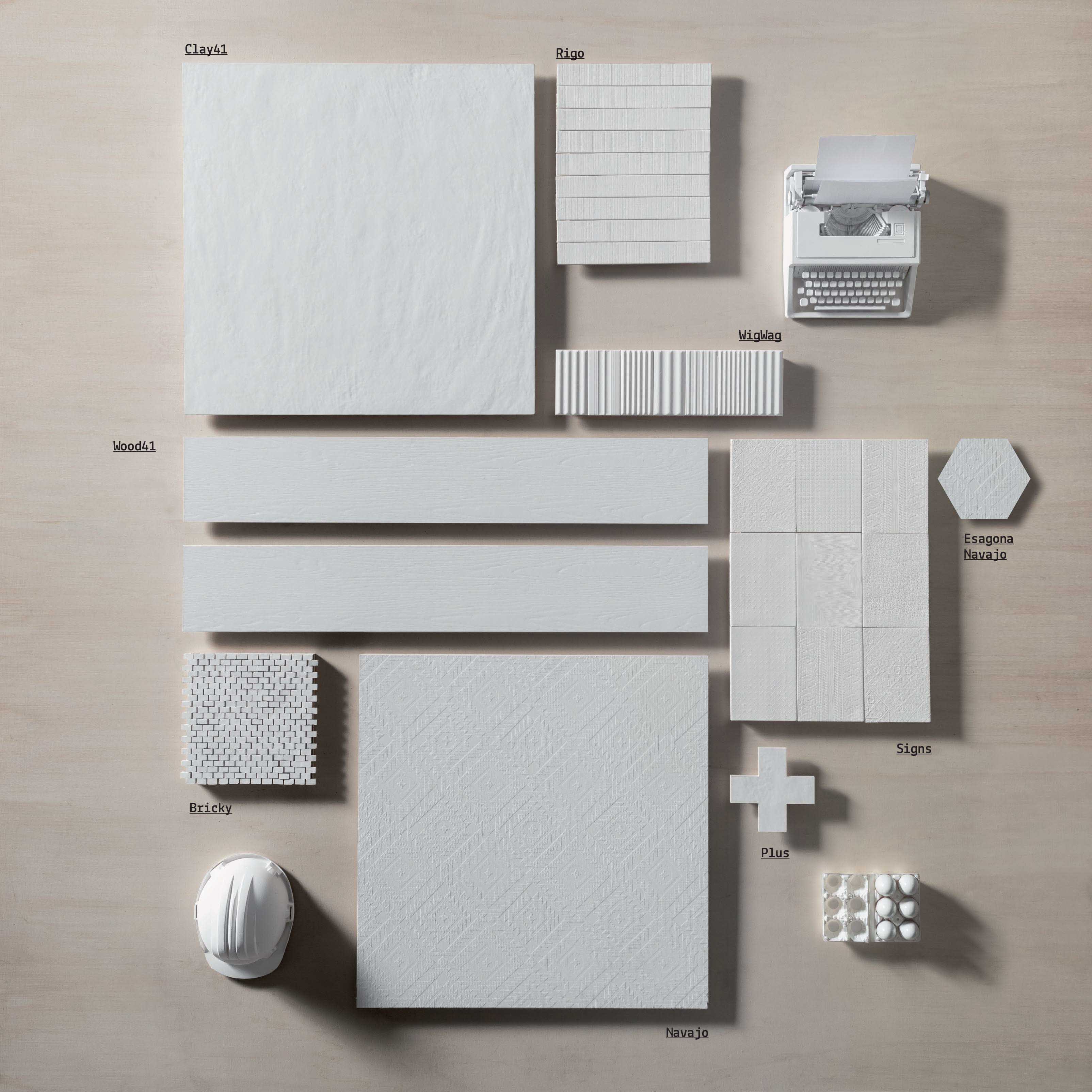
Image via 41zero42
17 Stunning Ceramic Tile Products Every Architect Should Know
The humble yet versatile ceramic tile truly gets around, from cladding walls and floors to furniture and even building exteriors. In fact, it’s such a go-to product type in both residential and commercial projects that ceramic tile consumption in the US alone amounts to more than 2.75 billion square feet every year. Spotlighting some of the many options available, here are some of the standouts from past editions of America’s premier tile and stone expo Coverings.
The Main Entry Deadline for Architizer's 2025 A+Product Awards is Friday, December 6. Get your brand in front of the AEC industry’s most renowned designers by submitting today.
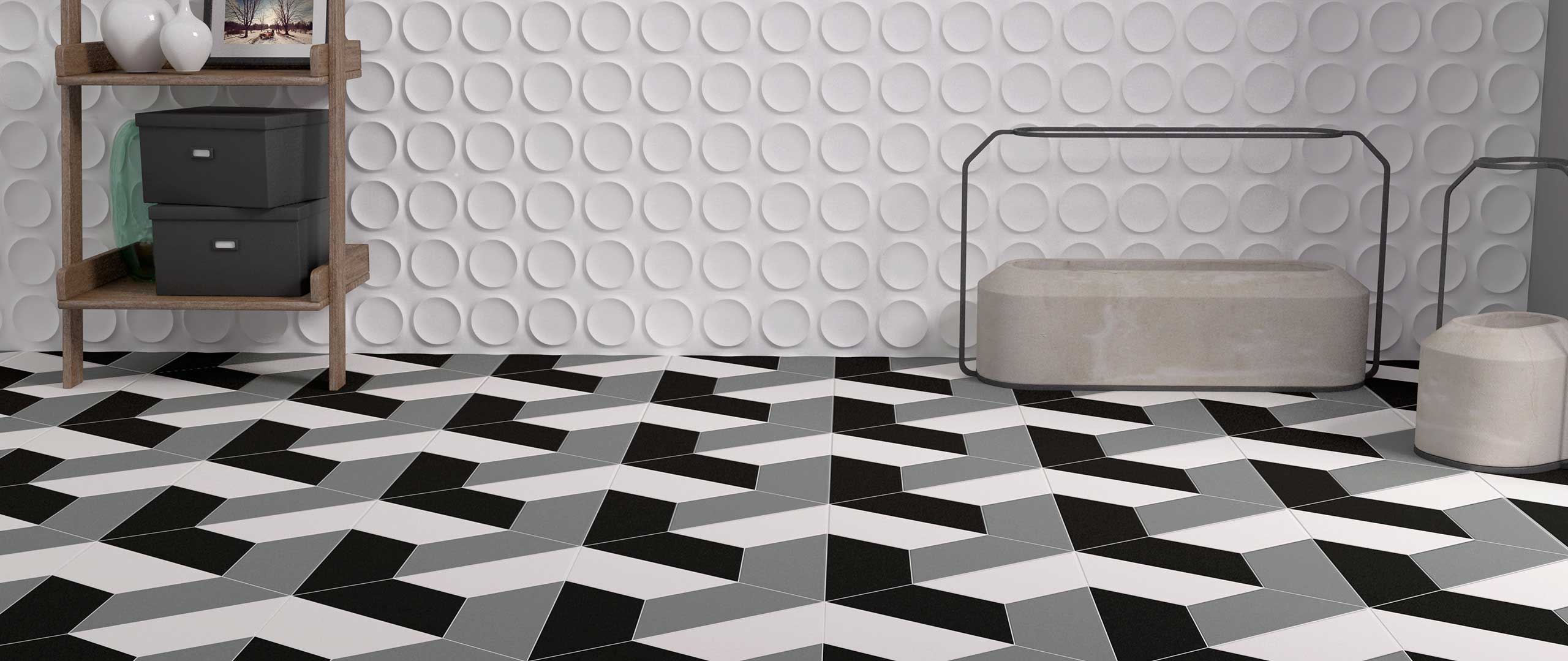
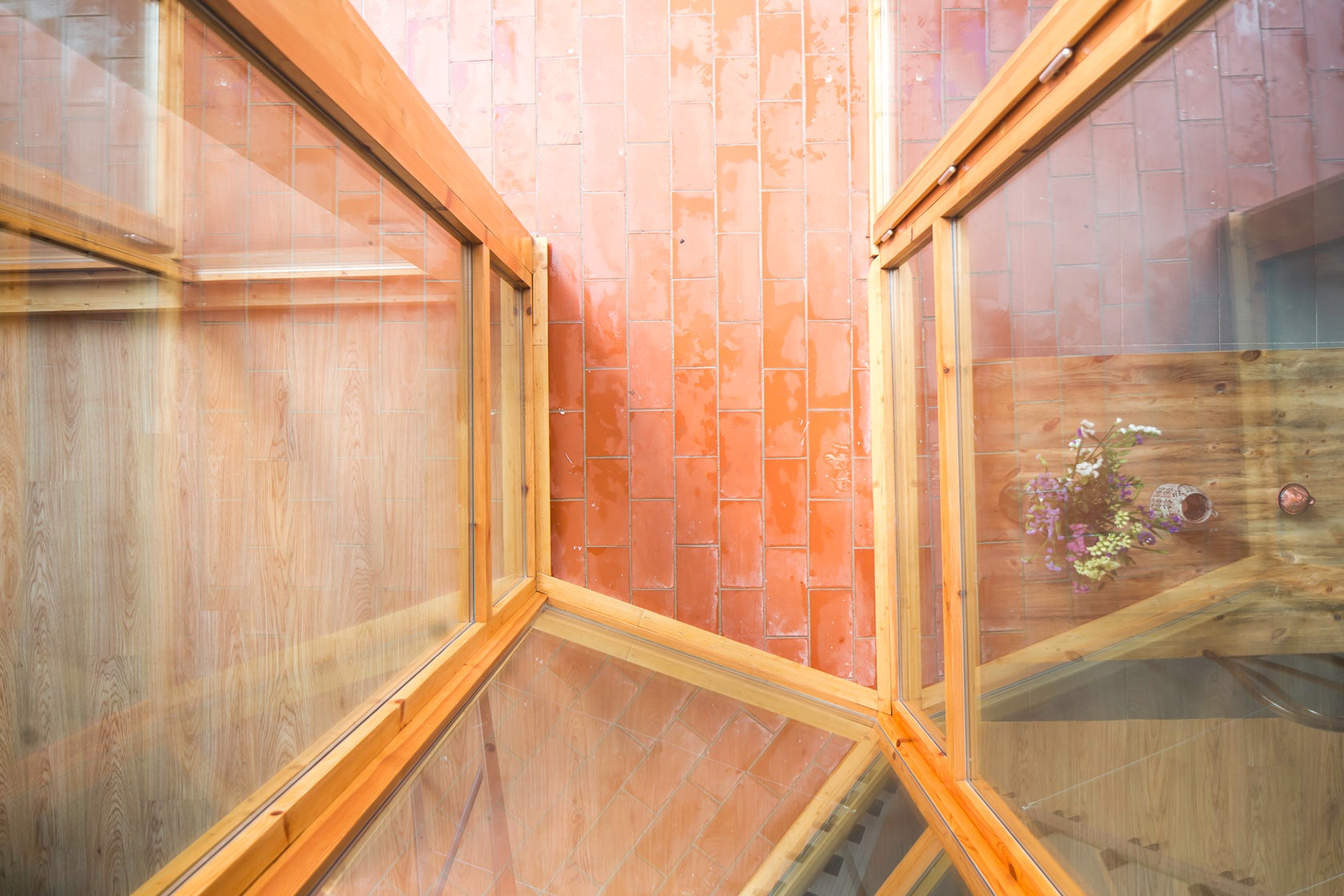
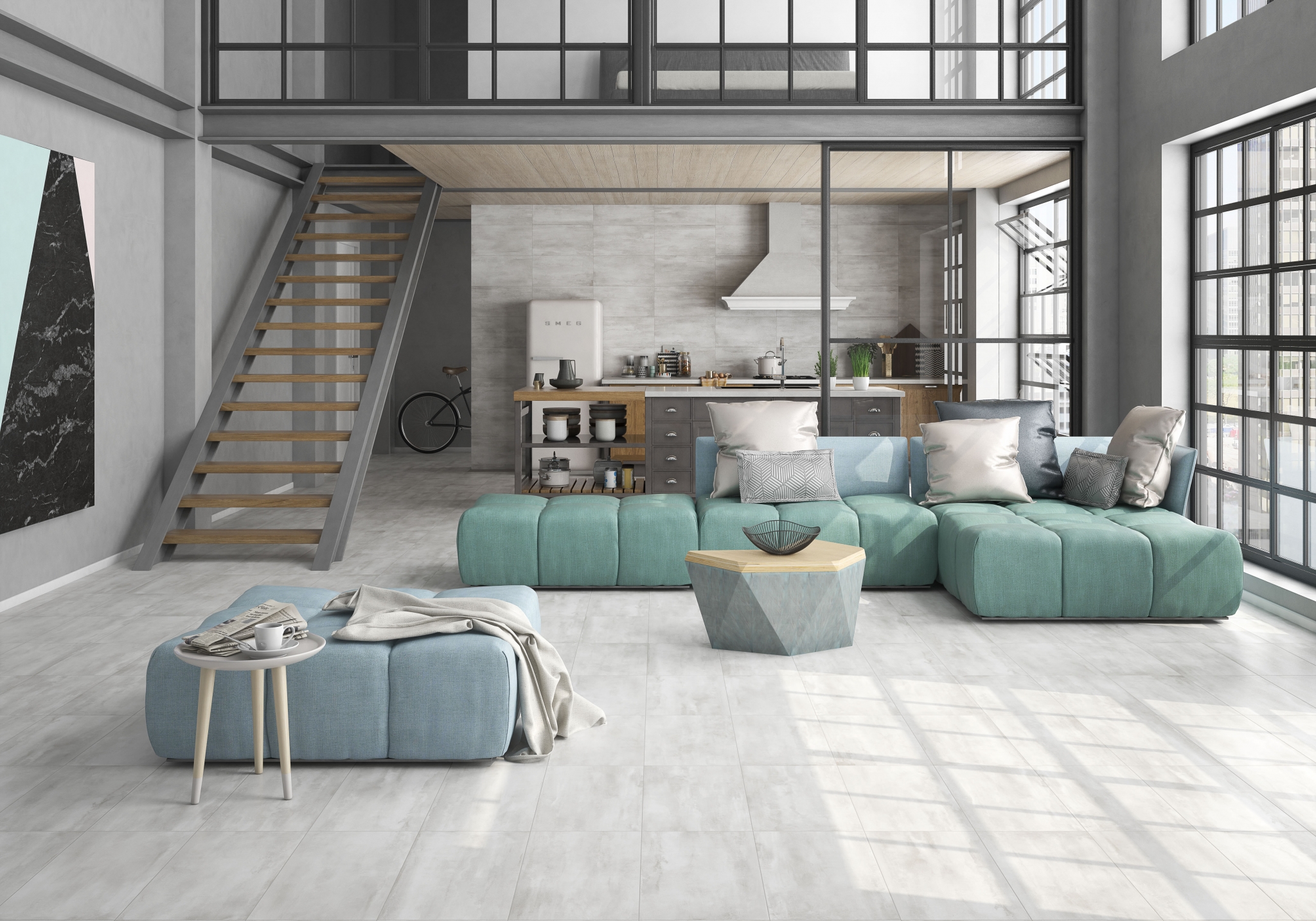
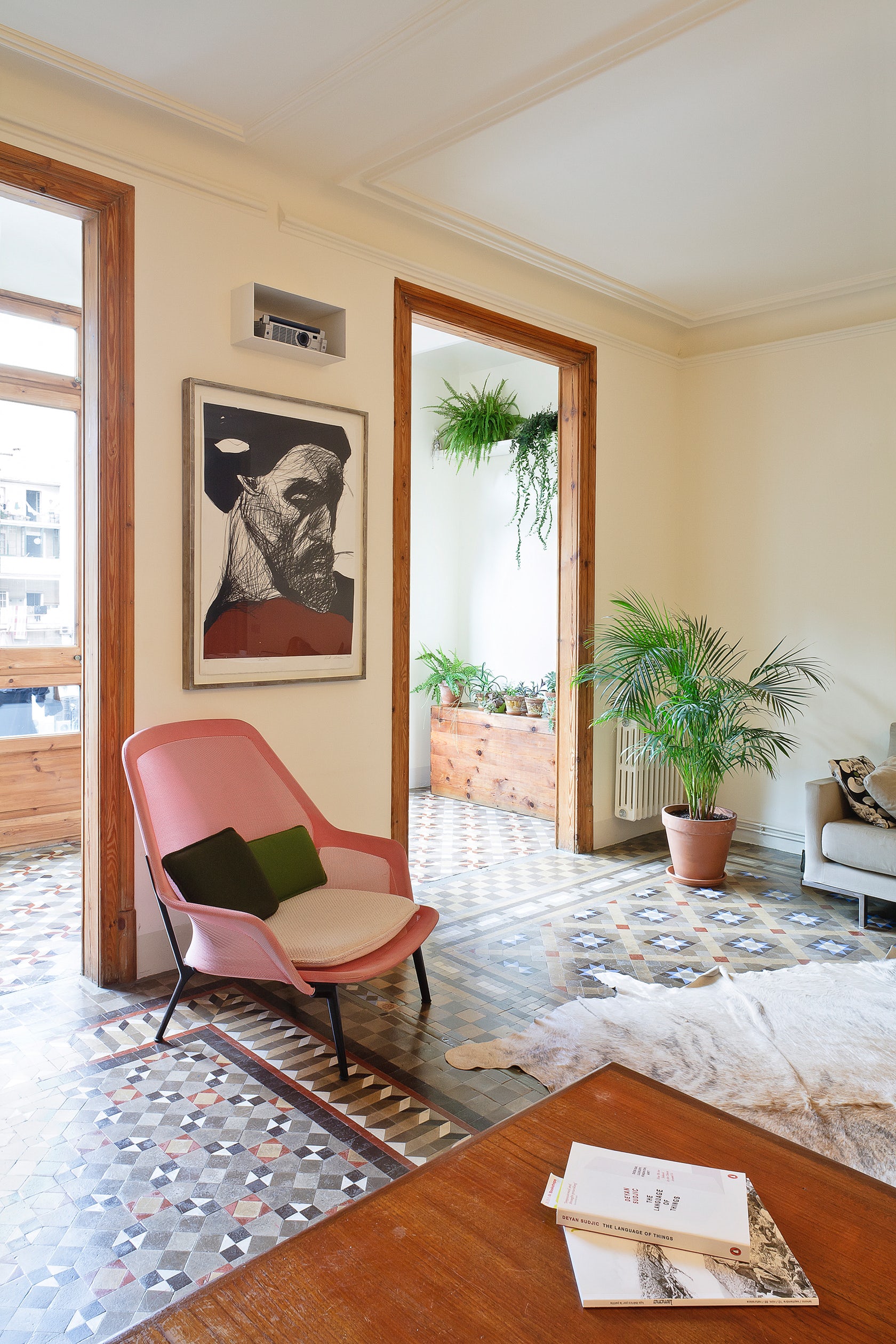
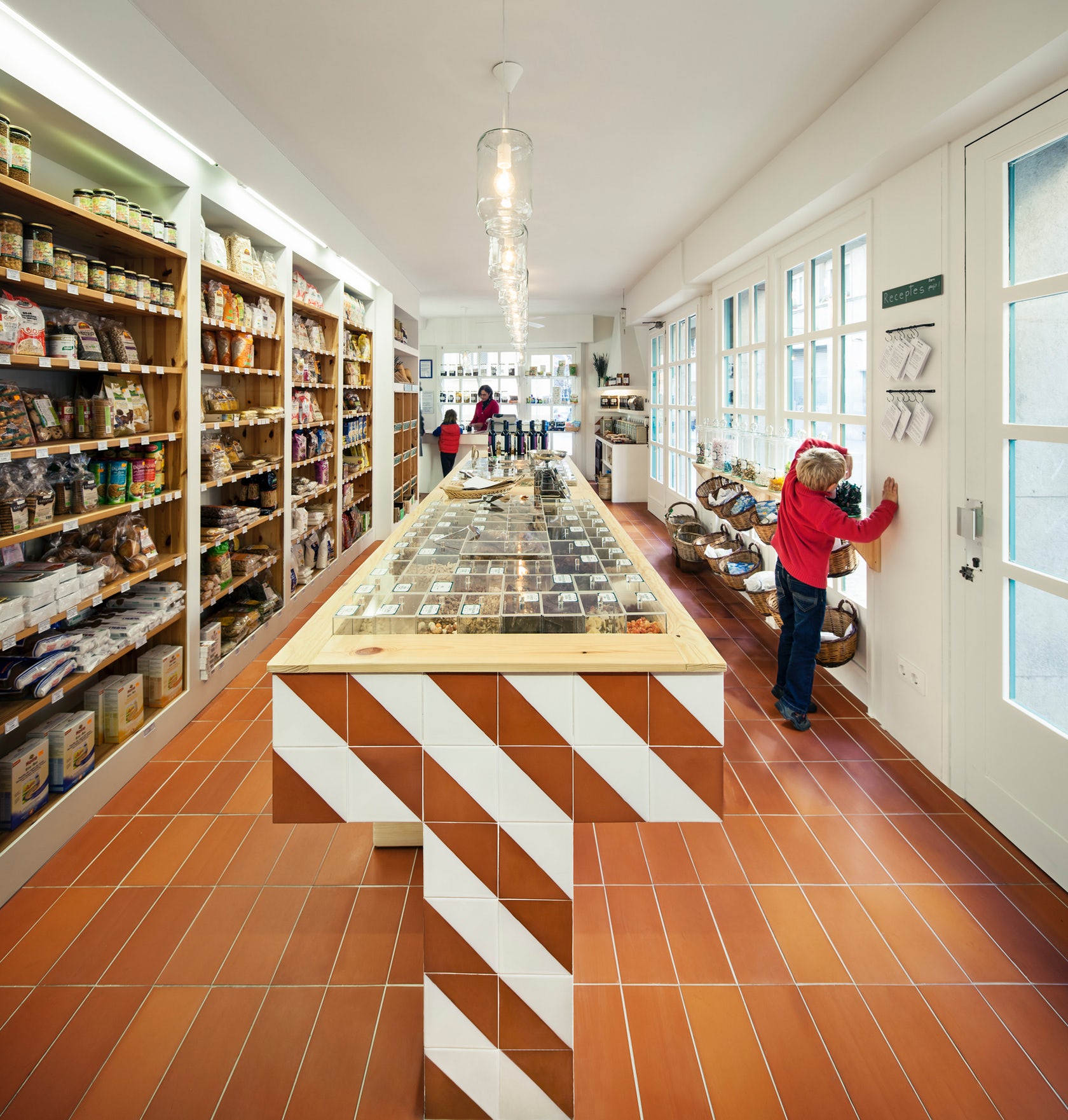
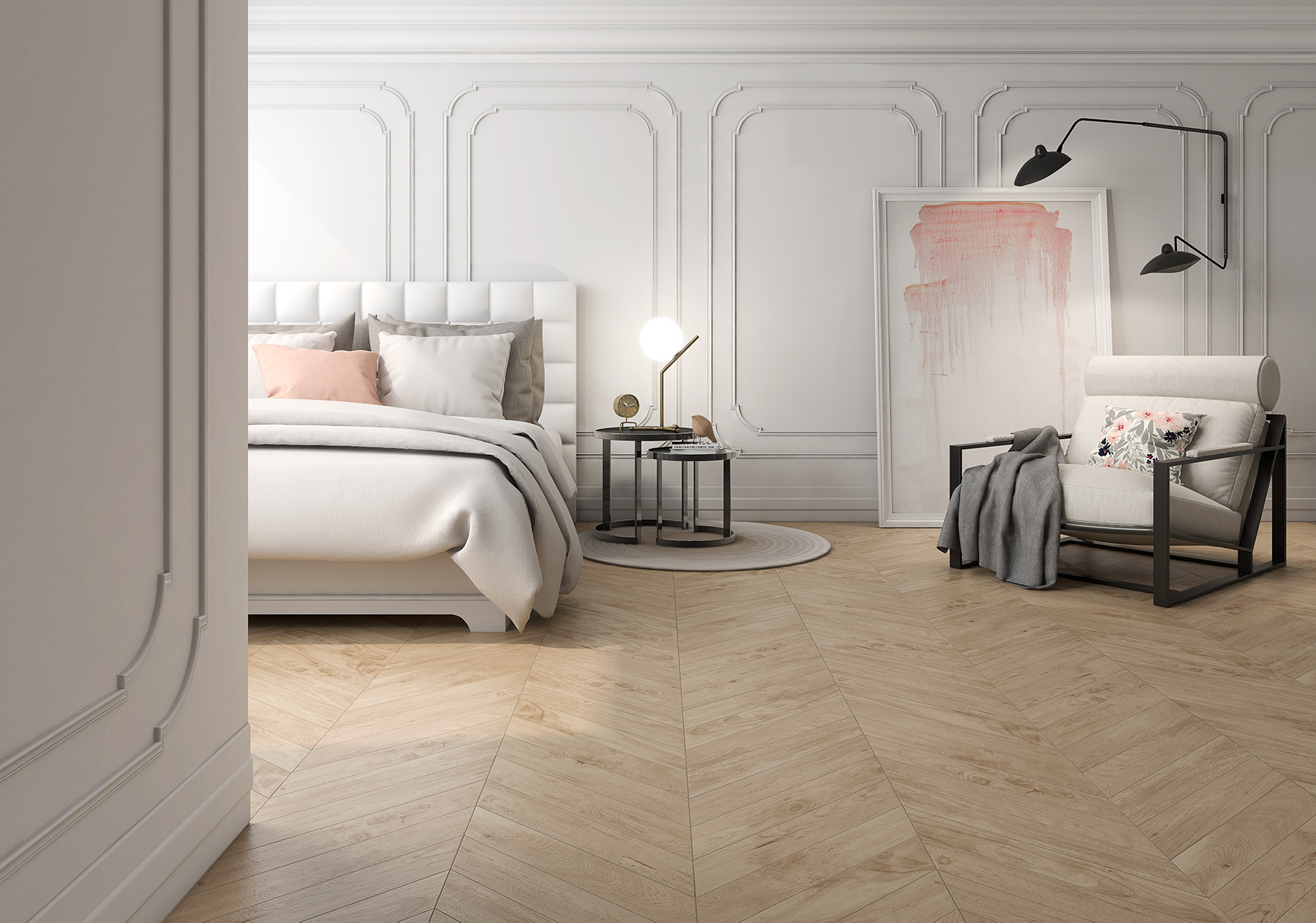
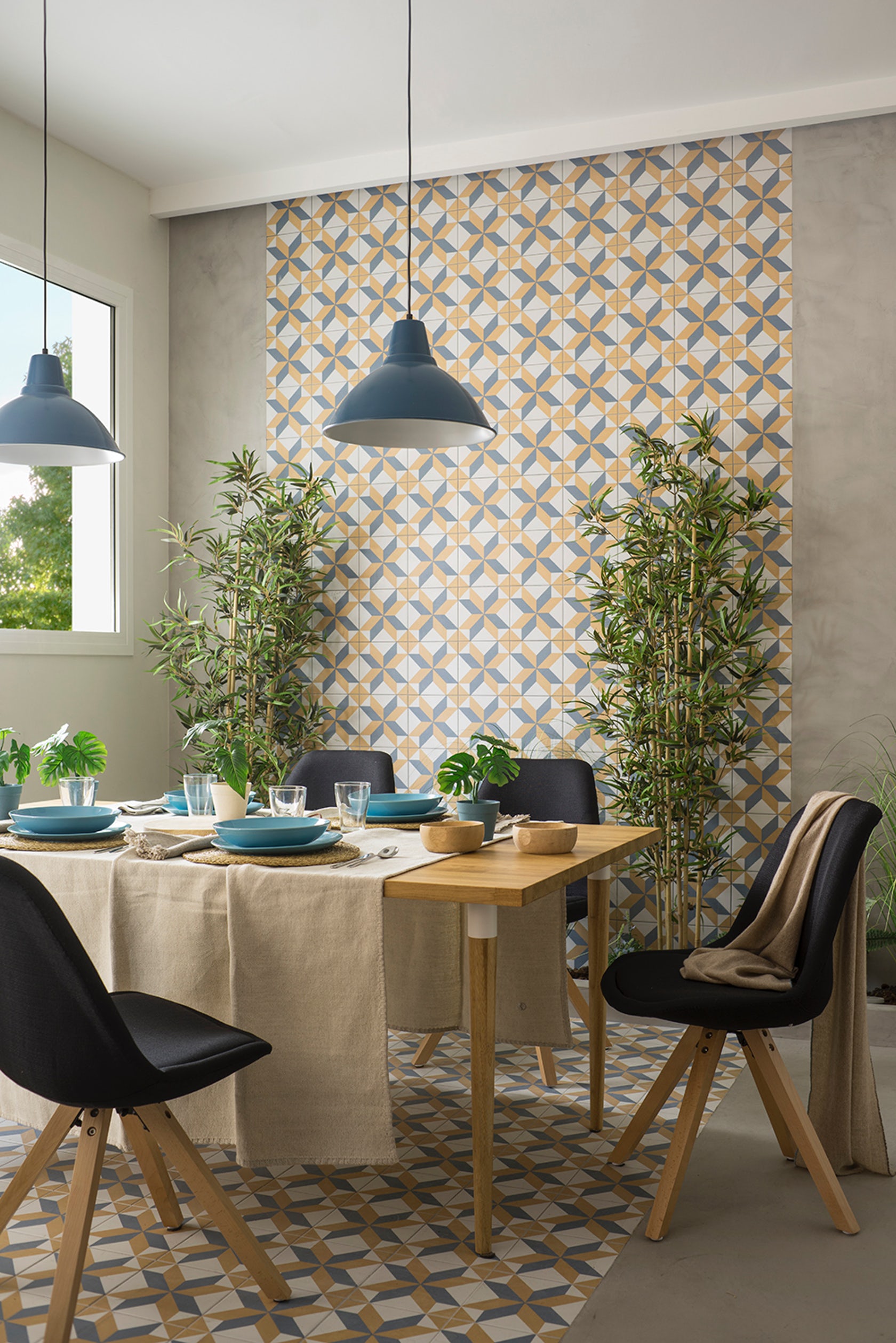
 Anura Vineyards' Event Venue and Bar
Anura Vineyards' Event Venue and Bar  Apartment refurbishment in Consell de Cent
Apartment refurbishment in Consell de Cent  Bodebo store
Bodebo store  Flat Renovation in the Eixample District of Barcelona
Flat Renovation in the Eixample District of Barcelona  Jesolo Lido Pool Villa
Jesolo Lido Pool Villa  Poblenou
Poblenou  Poblenou ein 3 acts
Poblenou ein 3 acts 